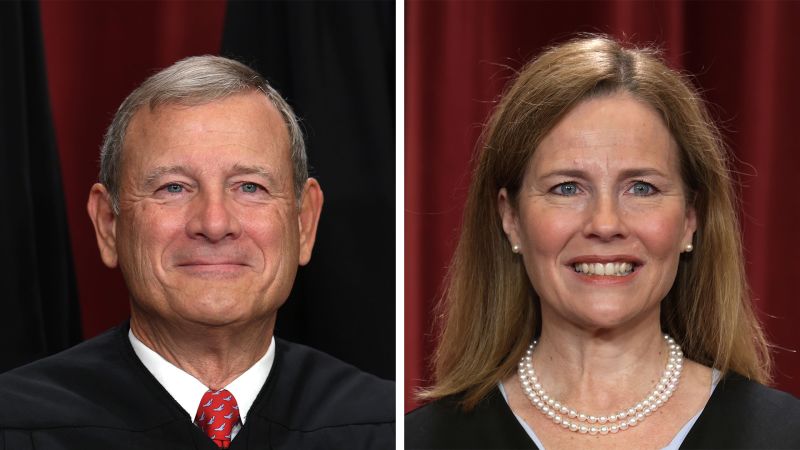Chief Justice John Roberts often downplays his influence over the Supreme Court, lamenting his lack of direct authority over his eight colleagues. “You can’t fire people if they don’t follow you. You can’t cut their pay,” he remarked to a group of federal judges, emphasizing the need for effective communication. Yet, Roberts holds a significant power: the ability to assign opinions when he is in the majority. This power allows him to shape the court’s decisions and the legal precedents they establish.
Roberts, who has been in the majority more than any other justice this term, strategically uses his assignment power. This was evident last Friday when he assigned Justice Amy Coney Barrett the opinion in a highly anticipated case that effectively freed President Donald Trump from numerous lower-court orders blocking his policies, including efforts to change birthright citizenship laws. The decision not only highlighted Barrett’s conservative stance but also served to quell criticism from Trump and his supporters.
The Strategic Use of Opinion Assignment
The chief justice’s role in opinion assignment is crucial because the rationale and tone of a Supreme Court decision can influence future cases and lower court judges. Roberts has often kept the most significant cases for himself, especially those involving presidential powers. However, he has also used his power to reward colleagues or challenge ideological stereotypes of the court.
Roberts’ decision to assign the Trump case to Barrett surprised many, as it was expected he would write the opinion himself or assign it to a more senior justice. The move not only strengthened his alliance with Barrett but also showcased her as a pivotal figure on the court, despite her junior status.
Historical Context and Comparisons
Roberts is not the first chief justice to use opinion assignments strategically. Chief Justices Warren Burger and William Rehnquist also employed this power to influence the court’s direction. Burger was known for switching his vote to control opinion assignments, favoring justices who shared his ideology. Rehnquist, on the other hand, was more even-handed, rewarding justices who wrote efficiently.
Roberts, who succeeded Rehnquist in 2005, has continued this tradition, often keeping major cases for himself. His assignments have sometimes aimed to dispel ideological divisions, assigning liberal justices to write opinions in cases that might seem contrary to their typical views.
Roberts’ Influence and the Current Court Dynamics
Roberts’ influence extends beyond opinion assignments. As chief justice, he oversees oral arguments and runs the private conferences where justices discuss and vote on cases. His seniority allows him to shape much of the court’s agenda, and his strategic decisions often reflect a balance between ideological leanings and institutional integrity.
Statistics from SCOTUSblog show that Roberts was in the majority more than any other justice last session, assigning 54 of the 56 signed opinions. This highlights his central role in the court’s decision-making process, despite the conservative majority.
The Implications of Barrett’s Role
Barrett’s appointment in 2020 marked a significant shift in the court’s dynamics. As a former Notre Dame law professor and Trump’s third appointee, her cautious yet effective approach has positioned her as a key figure. Her role in the Trump case, where she adopted an originalist method reminiscent of her mentor, Justice Antonin Scalia, underscores her growing influence.
Barrett’s opinion in the Trump case restricted the authority of district court judges to issue nationwide injunctions, a move celebrated by Trump’s legal team. Her decision reflects a strategic alignment with Roberts, who has often sought to balance conservative and liberal interests on the court.
Looking forward, Barrett’s role is likely to expand as she continues to navigate the complex dynamics of the Supreme Court. Her ability to draft compromise rationales and her strategic alliances with justices like Roberts will be crucial in shaping the court’s future decisions.
As the Supreme Court continues to tackle contentious issues, the behind-the-scenes influence of Chief Justice Roberts and the evolving role of Justice Barrett will remain central to understanding the court’s direction and its impact on American law and society.
